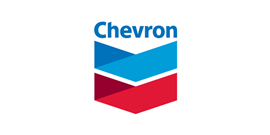Chevron boosts recovery efforts
September 03, 2024
Water injection operations off Gulf coast
Chevron has started water injection operations at two projects to boost oil and natural gas recovery at the company’s existing Jack/St. Malo and Tahiti facilities in the deepwater U.S. Gulf of Mexico.
“Delivery of these two projects maximizes returns from our existing resource base and contributes toward growing our production to 300,000 net barrels of oil equivalent per day in the U.S. Gulf of Mexico by 2026,” said Bruce Niemeyer, president, Chevron Americas Exploration & Production. “These achievements follow the recent production startup at our high-pressure Anchor field, reinforcing Chevron’s position as a leader in technological delivery and project execution in the Gulf.”

At the Jack/St. Malo facility, Chevron achieved first water injection at the St. Malo field, the company’s first waterflood project in the deepwater Wilcox trend. The project was delivered under budget, with the addition of water injection facilities, two new production wells, and two new injection wells. It is expected to add approximately 175 million barrels of oil equivalent to the St. Malo field’s gross ultimate recovery.
The St. Malo field and Jack/St. Malo facility are approximately 280 miles south of New Orleans, La., in approximately 7,000 feet of water. Since the fields started production in 2014, Jack and St. Malo together have cumulatively produced almost 400 million gross barrels of oil equivalent.
At the Tahiti facility, located approximately 190 miles (306 km) south of New Orleans in around 4,100 feet of water, Chevron started injecting water into its first deepwater Gulf producer-to-injector conversion wells. The project included installation of a new water injection manifold and 20,000 feet of flexible water injection flowline.
Bolstered by multiple development projects since the start of operations in 2009, the Tahiti facility recently surpassed 500 million gross barrels of oil-equivalent cumulative production. The company continues to study advanced drilling, completion, and production technologies that could be employed in future development phases at Tahiti and Jack/St. Malo with the potential to further increase recovery from these fields.
MAGAZINE
NEWSLETTER

CONNECT WITH THE TEAM







